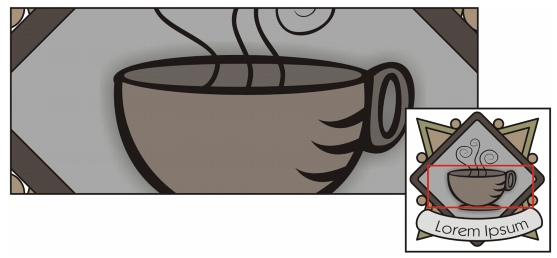Zooming, panning, and scrolling
You can change the view of a drawing by zooming in to get a closer look or by zooming out to see more of the drawing. You can experiment with a variety of zoom options to determine the amount of detail you want. Another way in which you can view specific areas of a drawing is by panning. When you work at high magnification levels or with large drawings, you may not be able to see the whole drawing. Panning and scrolling let you view areas that aren’t displayed by moving the page around in the drawing window.

You can use the Hand tool to pan around a large image and view particular areas.
You can zoom in and out while you are panning, and you can pan while you are zooming; this saves you from having to alternate between the two tools.
By specifying default zooming and panning settings, you can zoom in quickly to detailed parts of a drawing and zoom out to the larger context.
![]()
To zoom |
![]()
|
•
|
|
The Zoom to selected button is available only when you select one or more objects before you click the Zoom tool.
|
![]()
|
•
|
|
You can also zoom in by double-clicking or dragging anywhere in the drawing window using the Hand tool
|
To pan in the drawing window |
|
2.
|
|
Drag in the drawing window until the area you want to view appears.
|
![]()
|
•
|
|
You can quickly center the page in the drawing window by double-clicking the Zoom tool in the toolbox.
|

Using the Navigator, you can display any part of a drawing without having to zoom out.
To establish default settings for the Zoom tool and the Hand tool |
|
3.
|
|
To specify the action of the Zoom or Hand tool when you right-click it in the drawing window, enable one of the following options:
|
To establish default setting for the mouse wheel |
|
3.
|
|
To specify the default action of the mouse wheel, choose Zoom or Scroll from the Default action for mouse wheel list box.
|